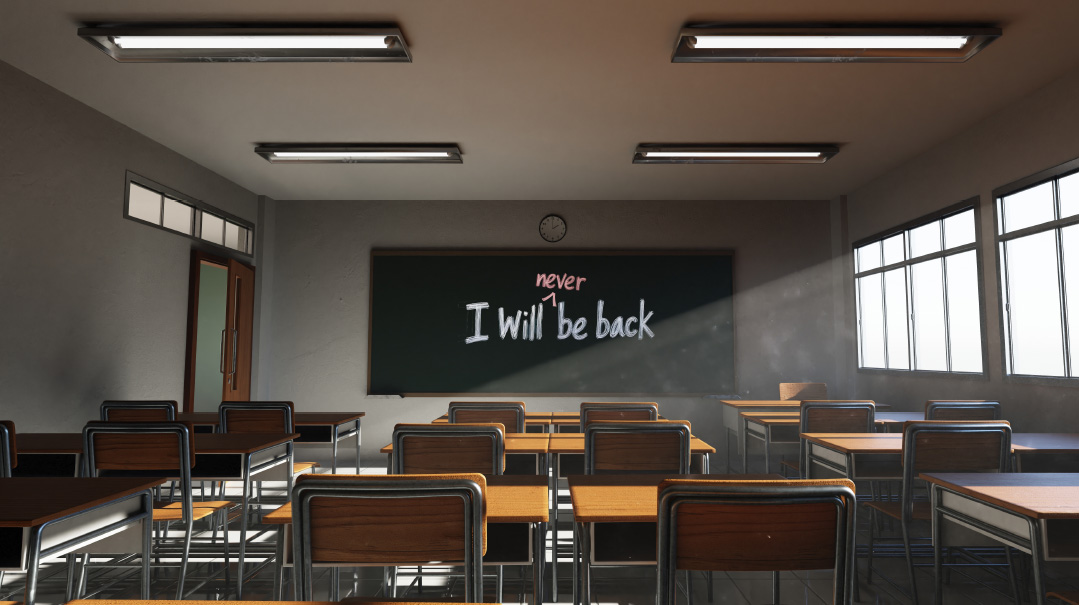Family First Inbox 744

“Not all shteiging”? Who, pray tell, whispered in this writer’s ear and informed her who is shteiging and who is not?

A Better Look at Kollel in Israel [Lifetakes / Issue 742]
I am not the type of person who normally writes letters to the editor, and certainly not to a women’s magazine. However, in the case of Shifra Seidman’s essay “Behind the Glitter,” which contained a critique of the American Torah community in Eretz Yisrael, I feel compelled to respond.
I was deeply disturbed by some of the sentiments expressed in this article. I found the tone highly presumptuous, and, in some areas, downright condescending. For instance, she writes “It’s clear why they, the couples, anyone, comes from afar, even if I know they’re not all shteiging.”
Excuse me? “Not all shteiging”? Who, pray tell, whispered in this writer’s ear and informed her who is shteiging and who is not? The yardstick by which one can measure shteiging only applies to a sum total of one person: himself. It is antithetical to the concepts of dan l’kaf zechus and ayin tovah to presume otherwise. Truthfully, I don’t know a single yungerman in Eretz Yisrael who is not here for the express purpose of shteiging.
The argument for this so-called lack of shteiging relies on the growing consumerism found here in Israel. As the article goes, “Once, you couldn’t get the ice cream you liked, the laundry detergent you wanted… You have this and this.” To which I respond: whoop-de-do. Is having access to Tide detergent really such an impediment to growing spiritually? The very notion is patently absurd. If that were the case, every single kollel couple in America should also be accused of not shteiging enough because they have access to such conveniences.
Is it really so shocking that Israel is (slowly, by the way) catching up to America and its spirit of consumerism? Does that negate the sacrifices kollel couples make to live here? Tell that to the young mothers who schlep their carriages up six flights of stairs to the babysitter on their own so their husbands can make it to seder on time. Tell that to the yungerman who squeezes himself onto an overcrowded Egged bus in the unbearable heat, while his counterparts in America cruise up to yeshivah in air-conditioned cars. Tell that to the bleary-eyed couples who wait outside Misrad Hapnim for hours in the early morning, only to be rewarded with more hours of exasperating Israeli bureaucratic absurdity. All this, so they can grow spiritually. All this, while living 6,000 miles away from their families. It may be easier to live here now than it once was, but it doesn’t compare to living at home. And even if it did, why should that justify the assumption that couples here are “not all shteiging”?
As a side note, the idea that the level of gashmiyus here surpasses or even rivals that of large frum communities in the US is laughable. I dare the author to try and find all the ingredients for even one of the intricate artisan recipes that commonly grace the pages of the Family First. I guarantee that she would have a difficult time of it.
When Rabi Shimon bar Yochai first emerged from the me’arah, his gaze burned with a righteous flame that destroyed all those not pursuing avodas Hashem to their fullest extent. Yet he was told to return to the me’arah until his gaze healed all he saw, leaving blessing in its wake. Perhaps we should take this as a lesson in ayin tovah, especially in light of recent events.
Nachi Botnick
Ramat Eshkol
The New Model of Kollel [Lifetakes / Issue 742]
I enjoyed and identified with the questions raised in the Shavuos Lifetakes piece about the material abundance enjoyed by many of today’s kollel couples.
I live in a “kollel neighborhood” in Israel, and I know many kollel couples who are still making do with the minimum. I also know couples who have been blessed with large spending accounts, who still manage to make Torah learning a priority. And I would be dishonest if I didn’t mention that I also see many couples enjoying an extended honeymoon with lots of eating out, lavish hosting, and yes, many sedorim learned as well.
I’m old enough to know that the kollel system was traditionally based on an inverse relationship between ruchniyus and gashmiyus. It was designated for a select few who felt capable of a certain degree of sacrifice. The understanding was that a focus on Torah comes along with a deemphasis on materialism, and that the years in kollel should be lived without luxury.
I don’t think we can deny that today we are seeing a change to that model. Kollel is for virtually everyone, and no longer does it come with an automatic decrease in living standard and material pleasure. This is not true for every couple, of course, but there is definitely a significant percentage of kollel couples whose living standard is not any lower than their counterparts in the working world.
It’s beautiful when a young couple is blessed with abundance and still manages to make the husband’s learning a priority, as the writer of the Lifetakes piece realized. But the underlying questions of her piece seem valid to me. When did this basic understanding change? How are our young couples affected by it? Is the new system an improvement, and is it producing more talmidei chachamim (or Torah-focused balabatim)? And is there anywhere in our world that can be immune to the rat race, now that consumerism and fashion are so pervasive?
Chana S.
First Stop on My Journey [My Lightning Flash / Issue 742]
Shoshana Schwartz’s piece about how she decided to live a life of connection with Hashem following Havdalah at an NCSY Shabbaton resonated with me. I had a similar eye-opening experience at Neve Yerushalyim 38 years ago. I was 22, just out of college, about to embark on a degree in counseling psychology. My family went to visit my sister who was “learning Torah,” as we were told, at Neve Yerushalayim. We had no idea what that meant.
My sister took me to classes. Rebbetzin Heller (now Gottlieb), opened up my eyes to a living Judaism. You don’t just study like I did in college, you learn in order to live authentic Judaism. The depth, the beauty, the lifestyle were so inviting and enticing that I forfeited my plans to learn psychology and instead stayed on at Neve to learn how to truly live. I have no regrets. Just a lot of hakaras hatov to all those who encouraged and applauded my journey.
Name Withheld
Weddings: A Lighter Look [Halachah / Issue 741]
In his most recent column, Rabbi Doniel Neustadt addressed some sh’eilos about weddings. I wanted to speculate on further answers.
Regarding the question of why we do the badeken ceremony, it seems to be symbolic. A husband is expected to be able to read the face of his wife to know when she disapproves of something or is upset about something he does. He covers the kallah with a veil to show that he will never succeed… men will forever be stupid and clueless. (Sigh).
Regarding the question of why the mothers break the plate, this seems to be a reminder that once both sides have fulfilled their close-to-impossible financial obligations, they can expect to only eat on paper from now on.
As for the question of divorced parents walking down the aisle, this would seem to be a sensitivity issue for the grandparents (finally!) who need to watch this and later view the pictures in the wedding album.
The poor guest who came too late for the chuppah should leave a nice note and a nicer check on the couple’s dinner plate to fulfill the obligation of bringing joy to the chassan and kallah.
The guest who washes but can’t wait for sheva brachos to bentsh should make a condition: If the photographer takes more than 45 minutes, then I have nothing to do with this party but I’m eating and dancing anyway.
R.K., who is forever eating on paper.
Heart of the Matter [Medical Mystery / Issue 741]
I was very interested to read the Medical Mystery about a woman who was diagnosed with SVT. I’ve been having unexplained episodes of heart palpitations for many years. The first time was over 20 years ago as a teenager. At first, they were very infrequent — once every few years — but they’ve started becoming more frequent and lasting longer each time, even over an hour! It feels and sounds like a stampede of horses coming at me as I feel my heart start racing and a very uncomfortable constriction in my throat.
The article suggested that stress would be a trigger and yet these episodes almost always happened to me when I was at rest — once it even woke me while I was sleeping. I always want to go to the ER to check it out, but I know the episode will end before I get there. I’ve tried to check this out with cardiologists, even going through the whole routine of wearing a heart monitor for a day. Like the author of the article, I knew it would be fruitless since I generally feel fine and suffer from these attacks so infrequently.
No one has suggested SVT and I plan to look into this, so thank you for potentially solving my own medical mystery. I would be interested to hear if anyone else has had similar symptoms and had it treated in Israel. I can be contacted through Mishpacha.
R.S.
Alopecia “Hairos” [Know This / Issue 741]
I would like to follow up on the Know This by Rivka Teitelbaum about alopecia.
There are some treatment options. The main two goals of treatment are to block the immune system’s attacks and to stimulate the regrowth of hair. Treatment options include topical steroids, cortisone shots, Protein Rich Plasma therapy (PRP) using a person’s own platelet-rich plasma via injection to stimulate growth. DCPC or similar irritants are also sometimes smeared on the skin to try to trip the immune system. Most recently, JAK inhibitors, both oral and topical, have been used as well. Non-conventional treatments include light therapy, acupuncture, diet changes, and stress reduction, as the condition is autoimmune.
There is a frum support group for alopecia sufferers as well as parents of children with alopecia. This is an amazing support team for adults and parents of children with alopecia. This group of parents also has support for kids called Hairos, where they have zoom meetings for kids, get-togethers, and generally support each other.
There are fantastic wigs nowadays for girls suffering from alopecia. There is also a ponytail wig called the Wunderwig, which really makes girls feel like “everyone else,” with their hair in a pony. There are tricks for adding baby hair and wefts to give the impression of a hair line. There are also partial wigs to fill in missing hair. While more limited, there are toupee options for boys as well. Some insurance companies and grants help cover hair prosthetics costs. There are those who also choose not to use wig and hat options at all.
You can email me at acohendpt@gmail.com to be added to the WhatsApp group.
Adam Cohen
(Originally featured in Family First, Issue 744)
Oops! We could not locate your form.



